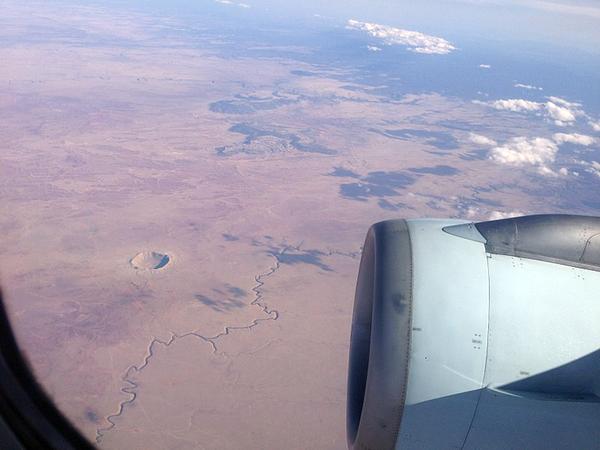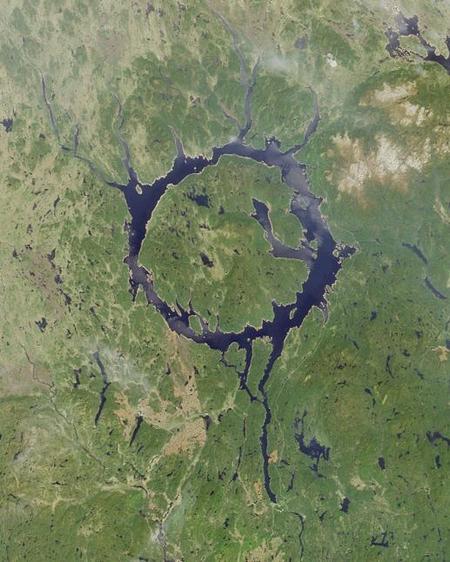
Flying back from California last Sunday I had a window seat on the south side of the plane. Over Arizona I noticed a pockmark on the landscape. Gee, that looks like a meteor crater. Well, it is.
Arizona’s Meteor Crater is the first place where scientists recognized that an impact from outer space had made a crater on earth. It’s also called the Barringer Crater because Daniel Barringer hypothesized it was made by an iron-rich meteor. He bought the crater in 1903 but found no iron at all (it had vaporized on impact). The family still owns the crater.
From the outside on the ground, the crater looks like a hill. At the rim it’s a deep hole. But to me it’s most impressive from the air. Here’s a closer in-flight look from Scott Manley on YouTube.
Earth has other meteor craters but they’re usually eroded and obscured by vegetation. Here’s one I saw in Canada while on a flight from Europe.

The Manicouagan Crater in northern Quebec (45 miles wide!) is revealed by the Manicouagan Reservoir it now contains. In 1998 geophysicist David Rowley hypothesized it’s one of a chain of five impact craters caused by a comet or asteroid that “bounced” over North America and Europe as it hit our planet.
From the airplane window I can see what hit us from the air.
(photos from Wikimedia Commons; click on the images to see the original. Video from Scott Manley on YouTube)
Sara and I visited Meteor Crater several years ago. It is a VERY big hole! And the winds were crazy high!